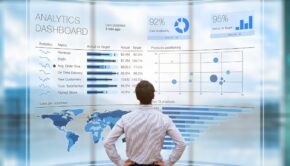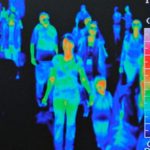What is Computer Vision and Why Is It Important?
In the field of artificial intelligence, computer vision is a term that refers to a machine’s ability to obtain meaningful information from videos, images, and various visual inputs, and to make recommendations or take actions according to the available information. Computer vision trains machines to perform the functions that humans normally do, using data, algorithms, and cameras to emulate our own reactive thought processes and behaviors.
When training a machine, you need to use a daunting quantity of data. Machines can make smart decisions from various datasets, but work to ensure that they closely imitate a human being’s capacity to make thoughtful decisions using minimal information is ongoing. Likewise, there is always room for error when huge amounts of data are labeled or annotated. Thus, it is still critical to add a human in the loop approach in the machine learning process.

Image source: https://www.pexels.com/photo/marketing-man-people-desk-4911663/
For example, humans can recognize the tail of a cat and identify it as a cat. A machine will need to see a range of images of cats, at different angles, colors, situations, environments, with people and other objects, to be able to fully recognize a cat. You can also include human in the loop for testing or tuning.
How computer vision works
You need plenty of data for computer vision. The system will run different analyses several times until it recognizes distinctions and eventually recognizes images with a high degree of accuracy.
You use two technologies to manage computer vision. One is machine deep learning, and the other is called a convolutional neural network.
In machine learning, the computer – along with the help of algorithmic models – can teach itself about visual data’s context. Providing the model with enough data, the computer will look at all the data and teach itself to identify different images.
In the convolutional method, the machine learning model looks into an image by breaking it down into pixels, which will be given labels or tags. The computer uses the labels to do convolutions and make predictions, then checks the accuracy of its predictions through several iterations until the predictions become true. In this manner, the machine sees the images as humans see them.
Computer vision tasks
Computer vision has several established tasks, and their possible applications, like the following:
- Image classification. The machines see an image and can classify it, or they can accurately predict that a certain image belongs to a specific class. This can be applied to a social media company to automatically identify and separate objectionable images that users upload.
- Object detection. A machine can use image classification to distinguish a certain class of image. It can detect and tabulate how the image appears in a video or photo. Applications include identifying machinery that needs maintenance or detecting damages in a factory’s assembly line.
- Object tracking. In this task, the machine tracks or follows a detected object. It is often used with real-time video feeds or captured images in sequence. For example, autonomous vehicles need to detect and classify objects like road infrastructure, other cars, and pedestrians. They need to track these objects in motion to obey traffic laws and avoid collisions.
- Content-based image retrieval. The task uses computer vision to search, browse, and retrieve images from data storage, according to the content of the images instead of the metadata tags. It can integrate automatic image annotation, and applicable to digital asset management systems that increase the search and retrieval of data.
















